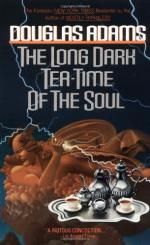|
This section contains 1,093 words (approx. 4 pages at 300 words per page) |

|
In the broadest sense, tea is a water extract of leaves, blossoms, roots, bark, or other parts of plants. The extraction can be done by soaking, boiling, and steeping (soaking in water below the boiling point). The extract can be an ordinary beverage or a medication.
The most common tea is from the leaves of the plant known as Camel-lia sinensis. Chinese legend attributes the accidental discovery (around 2700 B.C.E.) of drink made from this plant to King Shen Nong, who noticed tea leaves had blown into his kettle of boiling water. The tea that Shen Nong most probably drank is green tea, which quickly became the most popular beverage in China, Japan, Korea, and the countries of Southeast Asia. (Its popularity has continued, and in fact, tea brewed from Camellia sinensis is second only to water as the world's most popular beverage.) Unlike orange pekoe (a...
|
This section contains 1,093 words (approx. 4 pages at 300 words per page) |

|


